New products at Crocus
by Sarah - June 3rd, 2010.Filed under: Crocus, New Products.
New items today at Crocus
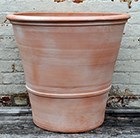
siena-olive-pot £34.99
This pot was inspired by a traditional design that is found throughout Tuscany, which is famous (among other things) for its ancient olive groves. Pots of this shape have been used for many centuries to keep olive trees, but its timeless shape and the fact that it comes in two sizes, means that it can also be used for a whole range of ornamental shrubs and small trees.Dimensions: Medium 40cm high x 50cm diameterLarge 54cm high x 60cm diameterTerracotta Pot Size Guide

eco-house-number £29.99
Make a eco diffrence to the planet this house number is made of used coffee cups collected from offices. Up to 3 numbers can be engraved. (including letters) i.e. 12a, 14b or 123 5.7cm high numbers are painted white after they are engraved.Sign Size Guide1-2 numbers – 15cm wide x 10 cm high. 3 numbers – 16.5cm wide x 10 cm high. How to orderAfter you have selected your sign and added to the wheelbarrow, when you have finished shopping in the checkout. Please write clearly in the delivery comments the number you require (any number between 0-999) Please Note All fixings and screws are supplied.Made to order signs are not returnable.

coprosma £12.99
Position: full sun or partial shadeSoil: neutral to slightly-acid, moderately-fertile, moist, well-drained soilRate of growth: averageOther features: inconspicious tubular summer flowersHardiness: fully hardy (borderline)A brand new introduction that was discovered by John Woods nursery in Suffolk, this is a truly outstanding plant with vibrantly coloured foliage. The leaf colour is at its most intense in spring and late autumn, but is still a head-turner at other times of the year. It forms neat, compact shrubs that are perfect for adding contrast to mixed borders, or try planting it up into a pot to add a blast of evergreen colour to your patio.Garden care: In spring, llightly trim any branches that spoil the symmetry of the plant. Afterwards apply a generous 5-7cm (2-3in) mulch of well-rotted leaf mould or composted pine needles around the base of the plant.
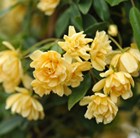
rose (rambler) £12.99
Position: full sunSoil: fertile, humus-rich, moist, well-drained soilRate of growth: average to fast-growingFlowering period: April and MayFlower colour: yellowOther features: scented flowers are followed by attractive rose-hipsHardiness: frost hardy (needs winter protection)This lovely rambling rose produces graceful sprays of small, double, deep yellow flowers in April and May. Perfect for covering an arch or pergola or for growing through a strong tree, the lightly scented flowers are followed by attractive rose-hips. Best in a sunny sheltered site.Garden care: Avoid planting in a site in which roses have recently been grown. Apply a balanced fertiliser and a generous 5-7cm (2-3in) mulch of well-rotted garden compost or manure around the base of the plant in late-winter or early-spring. Prune after flowering, reducing side-shoots to between two and four buds.
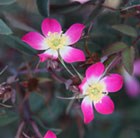
rose rubrifolia (shrub) £11.99
Position: full sunSoil: fertile, humus-rich, moist, well-drained soilRate of growth: fast-growingFlowering period: June and JulyFlower colour: cerise-pinkOther features: excellent cut-flowersHardiness: fully hardySmall clusters of single, cerise-pink flowers with pale pink centres in June and July on almost thornless stems, followed by spherical, red, autumn rose-hips. This vigorous, arching, species rose makes a great, informal flowering hedge for an open, sunny site. Its greyish-purple leaves and ornamental rose-hips are excellent material for flower arranging.Garden care: Before planting shorten thick roots to 25cm (10in) and reduce top-growth to an outward-facing bud 8-15cm (3-6in) above ground-level. Plant during a frost-free spell, incorporating well-rotted organic matter and a balanced fertiliser into the planting hole. Ensure that the ‘bud union’ (the bulge at the base of the shoots) is 2.5cm (1in) below the soil.All our roses are field grown. In October/November they are dug up and potted. However, they will not produce any new roots until spring, so don’t be surprised if the compost falls away from the roots when winter planting. Some suppliers send out ‘bare root’ plants unpotted, but we don’t as it is easier to manage them on the nursery in pots.
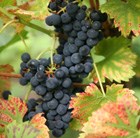
grape £11.99
Position: full sunSoil: well-drained, preferably neutral to alkaline soilRate of growth: fast-growingFlowering period: June to JulyFlower colour: tiny green flowersOther features:fiery autumn foliage colourHardiness: fully hardy A fairly vigorous, disease-resistant, outdoor grape that will produce clusters of blue-black, edible grapes that have a deliciously sweet flavour. Its attractive foliage forms great summer cover when grown over a pergola, and it turns vibrant shades of red and orange in autumn before it falls. For good fruit development, it will appreciate being grown against a warm and sunny, south-facing wall with protection from cold winds.Garden care: When planting incorporate plenty of well-rotted organic matter in to the planting hole. Prune in mid-winter, cutting back to fit the available space, and again in mid-summer if necessary.

rose New Dawn (climbing) £11.99
Position: full sun or partial shadeSoil: fertile, humus-rich, moist, well-drained soil, including clayRate of growth: fast-growingFlowering period: July to SeptemberFlower colour: pale pearl-pinkHardiness: fully hardySprays of cup-shaped, double, fragrant, pale pearl-pink flowers from July to September and shiny, mid-green leaves. This lovely, repeat-flowering, climbing rose flourishes in both sun and partial shade. One of the best and most vigorous climbing roses, it’s perfect for covering a house or garden wall.Garden care: Before planting shorten thick roots to 25cm (10in) and reduce top-growth to an outward-facing bud 8-15cm (3-6in) above ground-level. Plant during a frost-free spell, incorporating well-rotted organic matter and a balanced fertiliser into the planting hole. Ensure that the ‘bud union’ (the bulge at the base of the shoots) is 2.5cm (1in) below the soil.All our roses are field grown. In October/November they are dug up and potted. However, they will not produce any new roots until spring, so don’t be surprised if the compost falls away from the roots when winter planting. Some suppliers send out ‘bare root’ plants unpotted, but we don’t as it is easier to manage them on the nursery in pots.
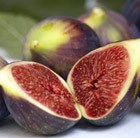
fig £10.99
Position: full sunSoil: will tolerate most soils, except very badly drainedRate of growth: averageHardiness: fully hardyThis deciduous, spreading shrub is highly ornamental, with large, glossy, palmat palmate leaves. It is best grown against a south or south-west facing wall, where, in long, hot summers it will produce an abundant crop of brown, pear-shaped fruit with red flesh. These figs are rich and sweet and available for picking from August to September. An interesting and easy plant to grow, and one of the oldest fruits in cultivation. Garden care: Plant in a 40cm (15in) pot in the ground or in a lined pit to restrict root-growth as unrestricted root growth leads to poor fruiting. Prune in spring when all chance of frost has past. Remove any frost-damaged or weak branches, and thin out shoots to let light in. Some pruning may be required in summer – trim all new shoots back to five or six leaves.Figs are capable of producing three crops of fruit every year, but in our climate it is the tiny little ones that you find tucked into the leaf axils in autumn, that if protected from frosts, will go on to ripen in their second summer. Therefore if you are growing the fig for its fruit rather than its foliage, you should remove any developing fruits that are larger than a pea in autumn, and either cover the crown of the tree with a blanket of frost fleece or try to gently pack it with straw. This will keep them snug and warm throughout winter and push the plants energy into the development of the young fruits, which should grow into fully ripened figs next year.
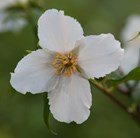
mock orange £9.99
Position: full sun or partial shadeSoil: fertile, well-drained soilRate of growth: average Flowering period: June and JulyHardiness: fully hardyIn June and July this lovely mock orange is smothered with highly fragrant, single, cup-shaped flowers with distinctive splashes of purple at the centre. The delicious orange-blossom fragrance floats on the breeze on warm summer evenings. This compact variety produces abundant, gorgeous, bridal-white flowers set off perfectly by oval, deep green leaves. This is an essential, low-maintenance shrub for a sunny mixed border, and it can also cope with poor soil, urban pollution and salt-laden air.Garden care: Mulch around the roots in spring with a deep layer of well-rotted garden compost or manure. Prune in late summer, immediately after flowering, removing one in four of the older stems to ground level.
pearl bush £9.99
abelia £8.99
white French lavender £7.99
bearded iris £7.99
bearded iris £7.99
sea holly £7.99
bearded iris £7.99
fern £7.99
sea holly £7.99
himalayan blue poppy £7.99






